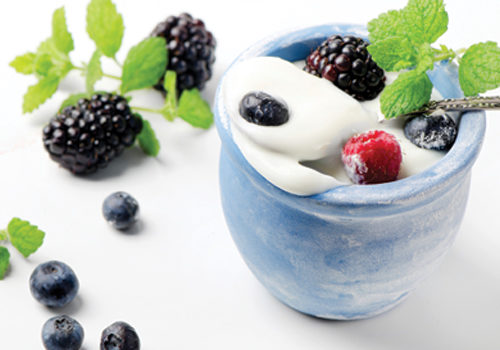It happens nearly every day: you’ve eaten lunch, dinner isn’t for another three hours and your stomach starts rumbling. Time to grab a quick snack! But looking at the vending machine in your office, all you see are potato chips fried in genetically modified oils and candy bars that are just chocolate-covered sugar with a side of artificial flavorings. If you and your shoppers are like millions of others today, these options just aren’t good enough anymore. You’re hungry for something healthy.
But, what is a “healthy snack,” anyway?
“In general, healthy snacks are low in fat and do not have added sugar,” say Joanne Thimothe, QC/R&D manager, and Robert Larsen, director of sales for Rochester, NY-based Brothers-All-Natural, makers of freeze-dried fruit chips. “The best foods, as we all know, are those that are as close to their natural forms as possible. The fewer ingredients, the better it usually is, and the easier your body can digest and process it.”
Tom Bilyeu, president of Quest Nutrition, a Marina Del Ray, CA-based company that specializes in low-carbohydrate protein bars, agrees that the shorter the ingredient list, the better. “Quest Protein Bars are famous for what they do NOT contain. They are gluten free, low in carbohydrates with no sugar added.” In short, junk-free is in.
Of course, snacks are not only defined by what they lack, but by what nutrition they contain. Protein, fiber, omegas, vitamins and minerals are high priorities. For instance, Maya Erwin, group marketing manager for snacks at Blue Diamond, Sacramento, CA, says her company’s Nut Thins are made from almonds, brown rice and seeds, and each variety gives shoppers a unique taste and set of nutritional benefits. She states, “Our Multi-Seed variety provides 21 g of whole grain goodness. Sesame Seed is a good source of fiber, and Flax Seed provides 400 mg of ALA omega-3.”
Other snacks have ingredients for better digestion, as Jim Breen, CEO and founder of Live Better Brands, LLC, Minneapolis, MN, explains. He hits on a trend in the healthy snack category: the use of sprouted seeds, grains and beans. Their benefits, says Breen, are important: “When a seed, grain or bean is germinated (or sprouted), it loses its protective outer layer, making the nutrients more available and easier for the body to digest and absorb.” Breen believes that incorporating sprouted ingredients is “more important than ever before, given the state of our current food system.”
Labels Don’t Lie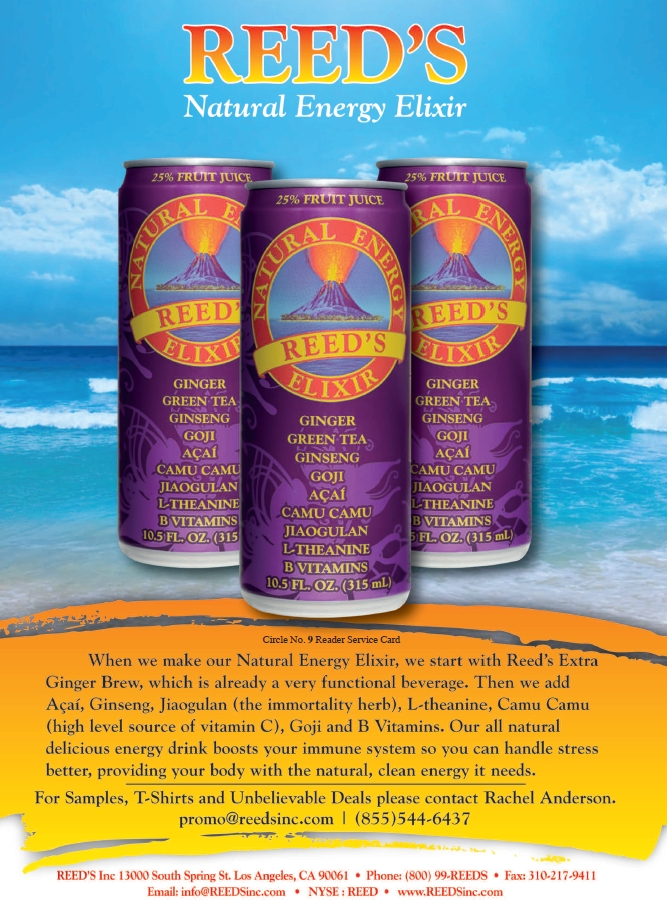
So, now we know some of what a healthy snack has (nutritional benefits) and doesn’t have (added sugar, processed ingredients or “junk”). But with so many different snack foods on grocery store shelves, it’s hard to differentiate the good guys from the bad guys. For example, Bilyeu says, “Most protein bars are simply candy in disguise, offering the illusion of health.” How and where can we find out which ones are really healthy, and which ones are masked maladies in colorful packaging?
The answer lies in the nutritional labels.
“Reading the label is key,” says Mark Gillis, CEO of Good Health Natural Foods (maker of Veggie Stix and Chips), Greensboro, NC. “Many snack manufacturers make claims on the front of the bag, but the back label should reveal if the product delivers actual nutrition.”
The U.S. Food and Drug Administration has been tracking misleading front-of-package (FOP) labeling claims for years. A 2011 study conducted by the Prevention Institute found that 84% of children’s food products with a “Better-for-You” FOP label failed to meet basic nutritional standards; 57% of the products even qualified as high sugar (1). Therefore, it may be best for consumers to do their own research and be able to read and understand the back-of-package label.
Breen agrees, adding that it’s important to learn how to interpret the ingredient statement as well, as there may be hidden dangers. “Often, companies may add some beneficial ingredients to their products—such as whole grains, for example—and then exclaim about health benefits, but then go on to add a host of not-as- healthful ingredients to preserve freshness, make their products easier to manufacture or just make them less costly to produce.”
Some of the common culprits of such a trick are companies that are exploiting Greek yogurt. According to a recent survey on healthy snacking habits conducted by Lab42, a market research company in Chicago, IL, Greek yogurt is the fourth most popular snack among healthy snackers (following fruit, nuts  and granola bars), and some manufacturers are taking advantage of their appeal with less-than-healthy options (2). The yogurt company Chobani, however, is a trusted exception.
and granola bars), and some manufacturers are taking advantage of their appeal with less-than-healthy options (2). The yogurt company Chobani, however, is a trusted exception.
“We pride ourselves in delivering an authentic strained Greek yogurt in every cup of Chobani with many nutritional benefits like protein and calcium,” says Kara Lydon, RD, LDN, health communications manager for Chobani, Norwich, NY. Unfortunately, she says, not all products with the words “Greek yogurt” in the title have the same benefits. “For example, a granola bar touting Greek yogurt as an ingredient can be packed with sugar and fat and contain little to no protein.”
The bottom line: in order to really know what is in their food, it’s necessary for consumers to learn how to read the nutrition label properly and understand what it means for both the product and their health.
Say No to GMOs
Besides offering little nutritional value, some major junk food companies are infamous for including genetically modified organisms (GMOs) and high-fructose corn syrup (HFCS) in their products. GMOs are artificially altered at the genetic level, and their health and environmental consequences are not entirely known, but the fact remains: they’re not natural. Therefore, healthy snack companies are staying far away from them.
“We are organic creatures on this earth and we believe in putting only the most natural ingredients into our bodies,” says Scott Jensen, co-founder and CEO of Rhythm Superfoods, Austin, TX. “While we are committed to delivering the tastiest foods possible, Rhythm’s goal is to also help you stay on your wellness path and that can only be done through using natural ingredients in our chips.”
Some companies are concerned about the lack 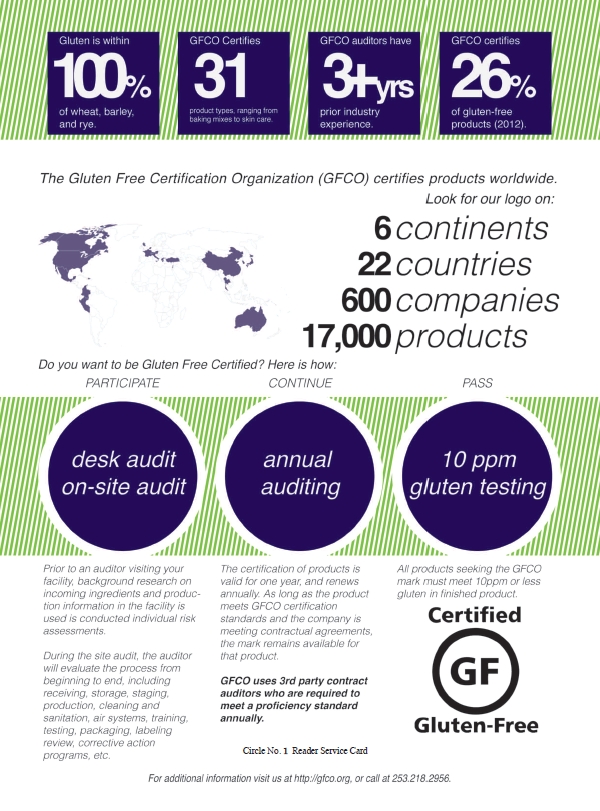 of information out there concerning these controversial ingredients. “People have the right to know what is in their food,” say Thimothe and Larsen. “There is still a need to better educate consumers about the risk or benefits of using GMOs and HFCS.” They fear that without proper education, the general public will not have enough information to choose their food wisely.
of information out there concerning these controversial ingredients. “People have the right to know what is in their food,” say Thimothe and Larsen. “There is still a need to better educate consumers about the risk or benefits of using GMOs and HFCS.” They fear that without proper education, the general public will not have enough information to choose their food wisely.
Breen shares this concern, and hopes that, as knowledge of the repercussions of GMOs and HFCS grows, “People and companies that stand on the side of using such ingredients will find themselves in the minority.”
And as for HFCS, Bilyeu calls it, “a metabolic disaster.” His company even refuses to have sugar anywhere in its facilities. Instead, Quest turns to natural sweeteners like the Chinese fruit lo han guo and stevia.
Picky Eaters
Okay, so natural snacks without junk and with nutritional benefits are the best for you. But, according to Lab42’s survey, the top quality consumers look for in a healthy snack is taste (see Charts A and B) (1).
As Bilyeu puts it, “People want to eat things that taste good. Plain and simple. One of Quest’s most important contributions has been creating products that taste like dessert but are made from the highest quality healthy ingredients.”
Thimothe and Larsen also know people have sweet and crunchy cravings, which they say dried-fruit chips satisfy: “They are a wonderfully crunchy alternative to fat-laden or sugary snacks such as chips or candy.” Delivering vitamins and servings of fruit, but cutting back on sodium, added sugar and calories, dried-fruit chips are an ideal healthy snack, say Thimothe and Larsen.
And as parents know, it’s not only the adults that need healthy snacks to be tasty. When it comes to kids, if it doesn’t taste good, they’re not going to eat it. Luckily, companies are well aware that teens and kids are picky eaters.
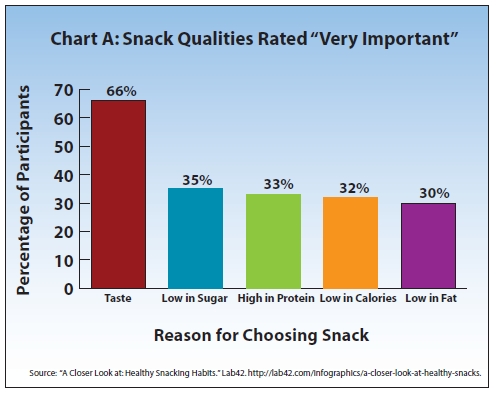 Genelle Chetcuti, director of marketing for RW Garcia, San Jose, CA, says her company’s philosophy is that great-tasting snacks can be good for you! “When it comes to kids and teens snacking healthy, tasting great is not just an option, but a requirement,” she says. Chetcuti references RW Garcia’s new Tortatos line, a combination tortilla/potato chip, which creates “a combo of flavors kids will crave, but in a chip much better for you than standard potato chips.”
Genelle Chetcuti, director of marketing for RW Garcia, San Jose, CA, says her company’s philosophy is that great-tasting snacks can be good for you! “When it comes to kids and teens snacking healthy, tasting great is not just an option, but a requirement,” she says. Chetcuti references RW Garcia’s new Tortatos line, a combination tortilla/potato chip, which creates “a combo of flavors kids will crave, but in a chip much better for you than standard potato chips.”
Finding healthier alternatives to what kids already like to eat may be a good starting point in the transition: “Look for the things your kids enjoy eating,” suggests Jensen. “Carrots and celery aren’t your only options when it comes to healthy snacking.” For instance, his company makes chips out of nutrient-packed kale and fiber-/protein-rich veggies in a variety of flavors.
In addition to familiar foods, however, Lydon suggests bringing new ideas and products to your kids’ snacking repertoire. “Parents should also encourage their kids to try one new healthy food item per week. Whether or not they like the first bite, it will encourage them to be open to a wide variety of flavors and textures.”
Healthy kid-friendly snacks are definitely out there, but they are of no use if they’re not in plain sight, say Thimothe and Larsen. “Snacks need to be within reach, attractive and convenient.” They also call for parents to lead by example and eat healthy themselves, making it more likely that their children will pick up the same eating habits. “Once they are used to eating healthy, they will reach for the snack by themselves.”
Just be sure that snacks don’t turn into a 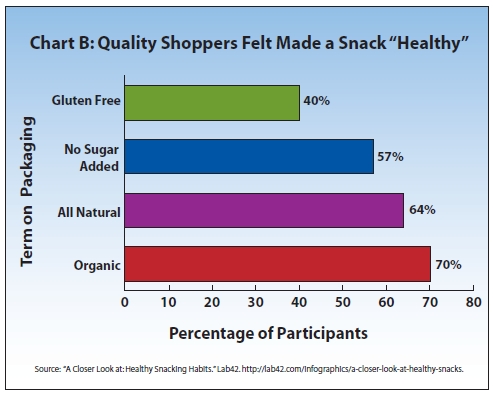 meal! Too much of anything, even a healthy snack, can be detrimental to health and wellbeing. So, it’s important, especially for those who want to control their weight, to use portion control, say Thimothe and Larsen. Look for pre-portioned snacks, like yogurt cups or single-serving bags of chips, they say, noting their firm’s fruit crisps come in individual-sized packages that are under 50 calories with two servings of fruit. “By conveniently packaging our Fruit Crisps in single-serve bags, it automatically limits the amount of our product that consumers eat,” Thimothe and Larsen state.
meal! Too much of anything, even a healthy snack, can be detrimental to health and wellbeing. So, it’s important, especially for those who want to control their weight, to use portion control, say Thimothe and Larsen. Look for pre-portioned snacks, like yogurt cups or single-serving bags of chips, they say, noting their firm’s fruit crisps come in individual-sized packages that are under 50 calories with two servings of fruit. “By conveniently packaging our Fruit Crisps in single-serve bags, it automatically limits the amount of our product that consumers eat,” Thimothe and Larsen state.
Gillis agrees that portion control is important, but knows that sometimes calculating how to measure a single serving is the most difficult part. He states, “This is why we just added a visual icon to the front of our Half Naked Popcorn to simplify serving size calculations in cups; one serving of Half Naked Popcorn is equal to four cups or 120 calories. Therefore, the icon shows that four cups equal 120 calories.”
What’s Trending?
Lab42’s consumer snacking survey found that, of 3,290 people, 22.3% identified themselves as a “healthy snacker,” as opposed to one who snacks for convenience or cost-efficiency, snacks on favorite foods or doesn’t snack at all (2). So shoppers who find themselves reaching for a low-calorie, high-protein snack instead of greasy potato chips are in good company!
“There used to be a stigma on healthy snacking,” Jensen believes, “but people are beginning to realize that eating well really improves and maintains your quality of life.” In fact, some would say that the new trend in healthy snacks is the healthy snack itself!
“The biggest trend in healthy snacks is the rapid growth of the category,” suggests Gillis. He has found that reaching for a snack between meals is more prevalent than ever before, and consumers want to “satisfy their needs for indulgence” while still eating sensibly.
Lydon agrees, adding that variety in flavors and textures is a big trend, but in general, “There is a cultural shift from mindless to mindful snacking, with consumers looking for options that are both satisfying and healthy.”
Why this sudden attention to health? Bilyeu answers: “People are waking up to the realities of metabolic disease. Obesity is sweeping both the nation and the world and it’s clear that our foods must change.” He believes that the way to fight obesity is through the marriage of health and taste.
Of course, there are other trends within the healthy category. Gluten-free foods are big, even with customers who are not gluten intolerant. “We are finding that consumers are choosing to eat gluten-free foods simply to make them feel better,” reports Erwin. She may be on to something: according to Lab42, 40% of those who identify as “healthy snackers” consider “gluten-free” foods to be healthier and more nutritious than a traditional snack (2).
According to Chetcuti, a final trend emerging in the healthy snack world is “demand for more unique flavor profiles.” She says that her company has come up with a variety of interesting flavors to meet this demand, such as English Cheddar, Curry Mango, Sweet Potato and more. Giving consumers more options will keep them on the healthy eating track. WF
References
1. Prevention Institute, “Claiming Health: Front-of-Package Labeling of Children’s Food,” www.preventioninstitute.org/component/jlibrary/article/id-293/127.html, accessed Oct. 28, 2013.
2. Lab42, “A Closer Look at: Healthy Snacking Habits,” http://lab42.com/infographics/a-closer-look-at-healthy-snacks, accessed Oct. 3, 2013.
Published in WholeFoods Magazine, December 2013

